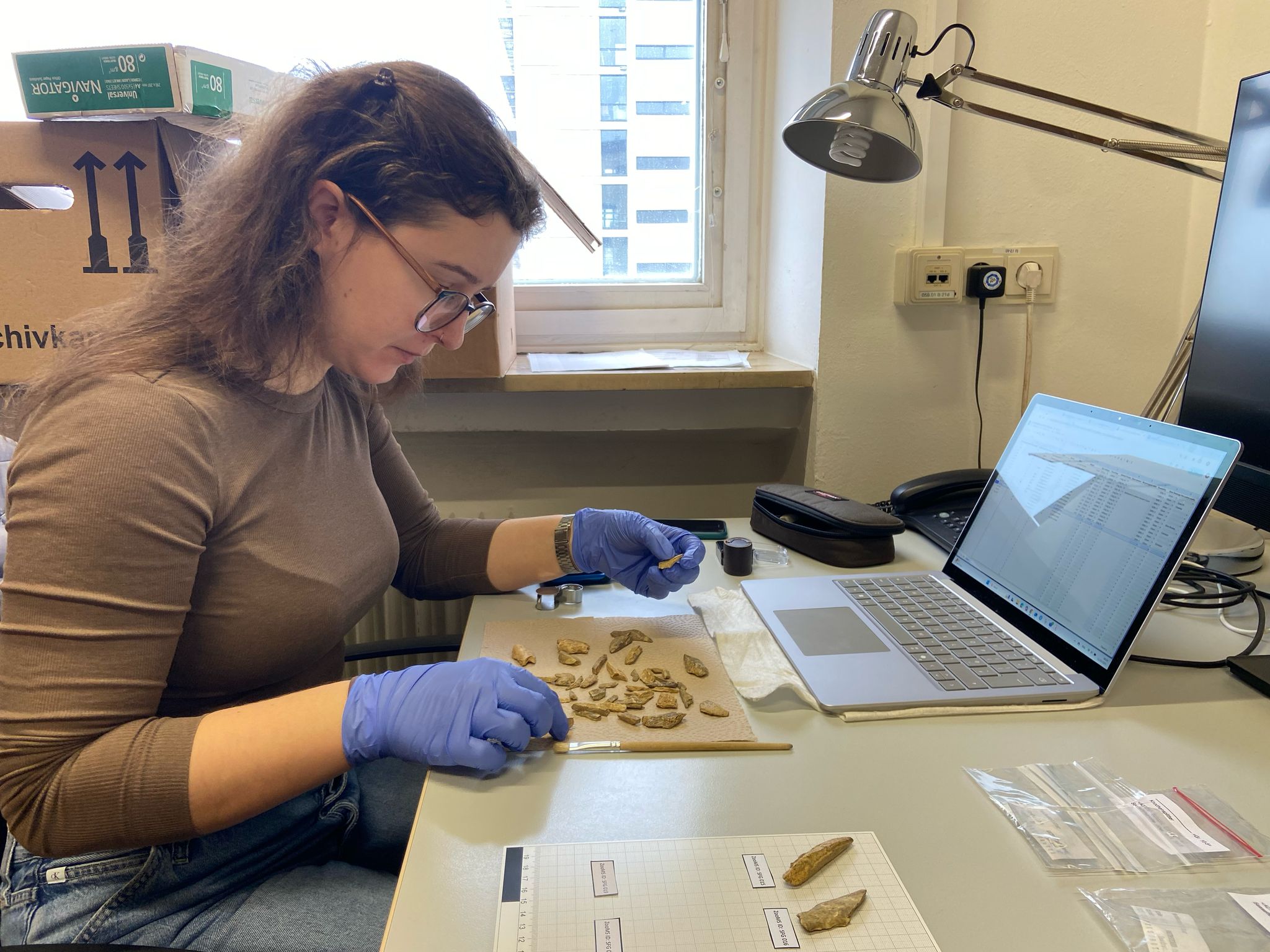In March, Karen Ruebens (PI of COEXIST) and Anna Wagner (PhD student) travelled to Erlangen to sample faunal material from two significant late Neanderthal sites: Sesselfelsgrotte and Schulerloch. This work was carried out in collaboration with Prof. Thorsten Uthmeier at th Institut für Ur-und Frühgeschichte der FAU
Sesselfelsgrotte, particularly the E3 layer, is well known for its Neanderthal occupations, including the discovery of juvenile skeletons in the lower layers. Schulerloch, another key Neanderthal site, provided material from its upper and middle layers. In total, 297 specimens were sampled—152 from Sesselfelsgrotte, covering different areas of the cave, and 145 from Schulerloch’s upper and middle deposits.
By identifying species from highly fragmented bones with ZooMS (Zooarchaeology by Mass Spectrometry), this study aims to refine understanding of Neanderthal prey selection and subsistence strategies. Additionally, comparing the two sites may reveal broader patterns in Neanderthal hunting and site use during the late Middle Palaeolithic. The differing preservation conditions and disturbed contexts at these sites make them particularly interesting for ZooMS analysis.
These samples will soon be processed, with results expected in the near future. This study will contribute to the larger COEXIST dataset, enhancing knowledge of Neanderthal lifeways in Central Europe and providing new insights into their interactions with the environment.

